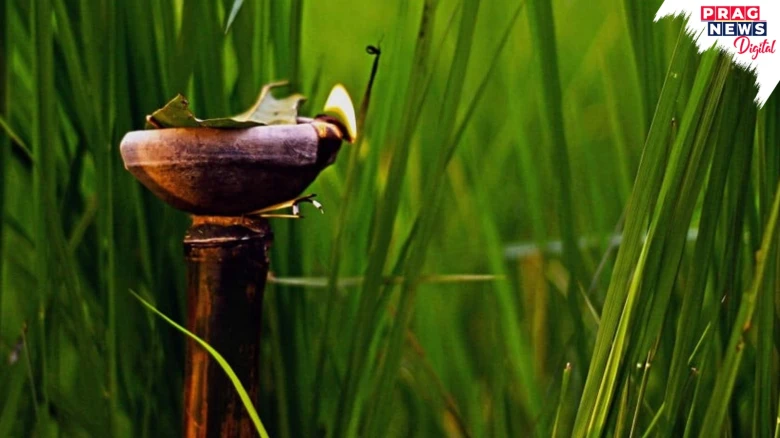Regional

Kati Bihu is generally observed on the 19th of October as it is almost mid-October...
Digital Desk: Kongali Bihu, celebrated in mid-October Also known as Kati – Bihu was completely different because there is not much merry-making in this celebration. This time of the year there is paddy growing on the field while the stored within their barns by farmers are nearly bare.
On this day saki (earthen lamps) are lighted at the doorstep of the household, (Basil) Tulsi plant, in the granary, in the garden (bari), and on the paddy fields. During this time of the year, the paddy in the fields is in the growing stage and the granaries of the farmers are almost empty.
They say that even in the past, people would light earthen lamps all over the paddy fields to lure the insects so that they would be killed by the light. Culthvers sustain the maturing paddy, they whirl around a piece of bamboo recite rowa khowa…chants, and spells against attacks of pests and other evils.
At night special rice items known as pitha are prepared and given as food to the cattle. Kati Bihu is called as Kati Gasa among Bodo and Gathi Sainjora among the Dimasa people.The Bodo people burn lamps at the base of the siju tree.
This Bihu is also linked with akaxi gonga or akaxbonti, lamps placed at the peak of a tall bamboo stick so that the souls of the deceased find the path to heaven as observed by many cultures and traditions of India, Asia, and Europe in general
Kati Bihu is generally observed on the 19th of October as it is almost mid-October. This time is less merriment and the atmosphere has a sense of constraining and solemnity. During this time of the year, the paddy in the fields is in the growing stage and the granaries of the farmers are almost empty.
This festival also attaches a time of worship to the farm and the growing season of
the paddy crops. People light up small earthen lamps which are referred to as “saki” in the field in order to seek a good harvest. It signifies the bond of the Assamese people with their land.
Leave A Comment